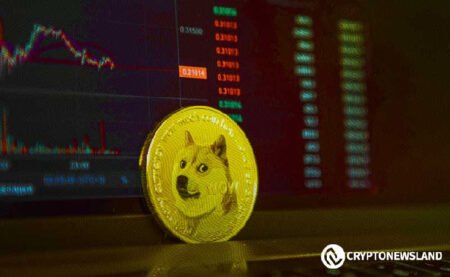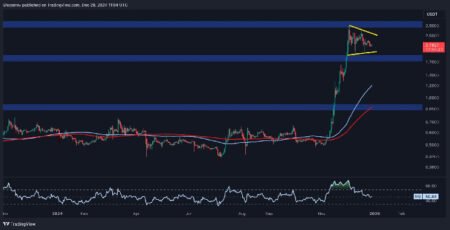The crypto market took a significant hit as bitcoin approached the $93,000 mark, causing a widespread decline in major tokens such as Ether, Solana’s SOL, Cardano’s ADA, XRP, and BNB. The meme coin Dogecoin also saw a steep drop of over 27%. Overall, the crypto market capitalization plummeted more than 11% in the past 24 hours, marking one of the worst single-day drops of the year. Many traders attribute this downturn to a hawkish tone in the recent FOMC meeting, which shifted market sentiment negatively as the new year approaches.
According to Jeff Mei, COO of crypto exchange BTSE, the Federal Reserve’s decision to cut rates in the meeting was already anticipated and factored into the market. However, the Fed’s outlook for next year was less optimistic than expected, leading to a decline in investor confidence. Mei suggests that traders proceed with caution until inflation is under control and concrete policies from the upcoming Trump administration are clearer. Despite the current bearish trend, Mei remains optimistic about the future of crypto markets, especially Bitcoin, as he believes that monetary and fiscal stimulus policies worldwide will increase liquidity and boost the value of cryptocurrencies in the mid to long term.
In the short term, the crypto market may continue to face volatility and uncertainty as investors digest the recent developments from the FOMC meeting and await further policy announcements. The decline in major tokens like Bitcoin and Ethereum signifies a broader risk-off sentiment among traders, who are seeking more stable assets amidst economic uncertainty and global challenges. Some analysts predict that the crypto market may see a consolidation phase in the coming weeks as investors reevaluate their positions and adjust their strategies accordingly.
Despite the current market downturn, some experts believe that cryptocurrencies like Bitcoin have the potential to serve as safe-haven assets in times of economic turmoil. As traditional markets undergo turbulence, investors may turn to digital assets for diversification and risk management. The increasing interest in decentralized finance (DeFi) and blockchain technology also bodes well for the long-term growth of the crypto market, as more institutional players and retail investors enter the space in search of innovative financial solutions.
As the crypto market evolves and matures, regulatory developments and government policies will play a crucial role in shaping its future trajectory. Increased oversight and compliance requirements could enhance investor confidence and pave the way for mainstream adoption of cryptocurrencies. However, regulatory uncertainty and enforcement actions may also create headwinds for the market, leading to increased volatility and price fluctuations. In this changing landscape, it is essential for investors to stay informed and adapt to new market conditions to navigate the challenges and opportunities presented by the crypto industry.
In conclusion, the recent downturn in the crypto market highlights the inherent volatility and risks associated with digital assets. While short-term price fluctuations may impact investor sentiment, the long-term outlook for cryptocurrencies remains positive as more individuals and institutions recognize their potential value and utility. As the market continues to evolve, adaptability and strategic decision-making will be essential for investors to capitalize on the opportunities and mitigate the risks presented by the dynamic and ever-changing landscape of the crypto industry.



















